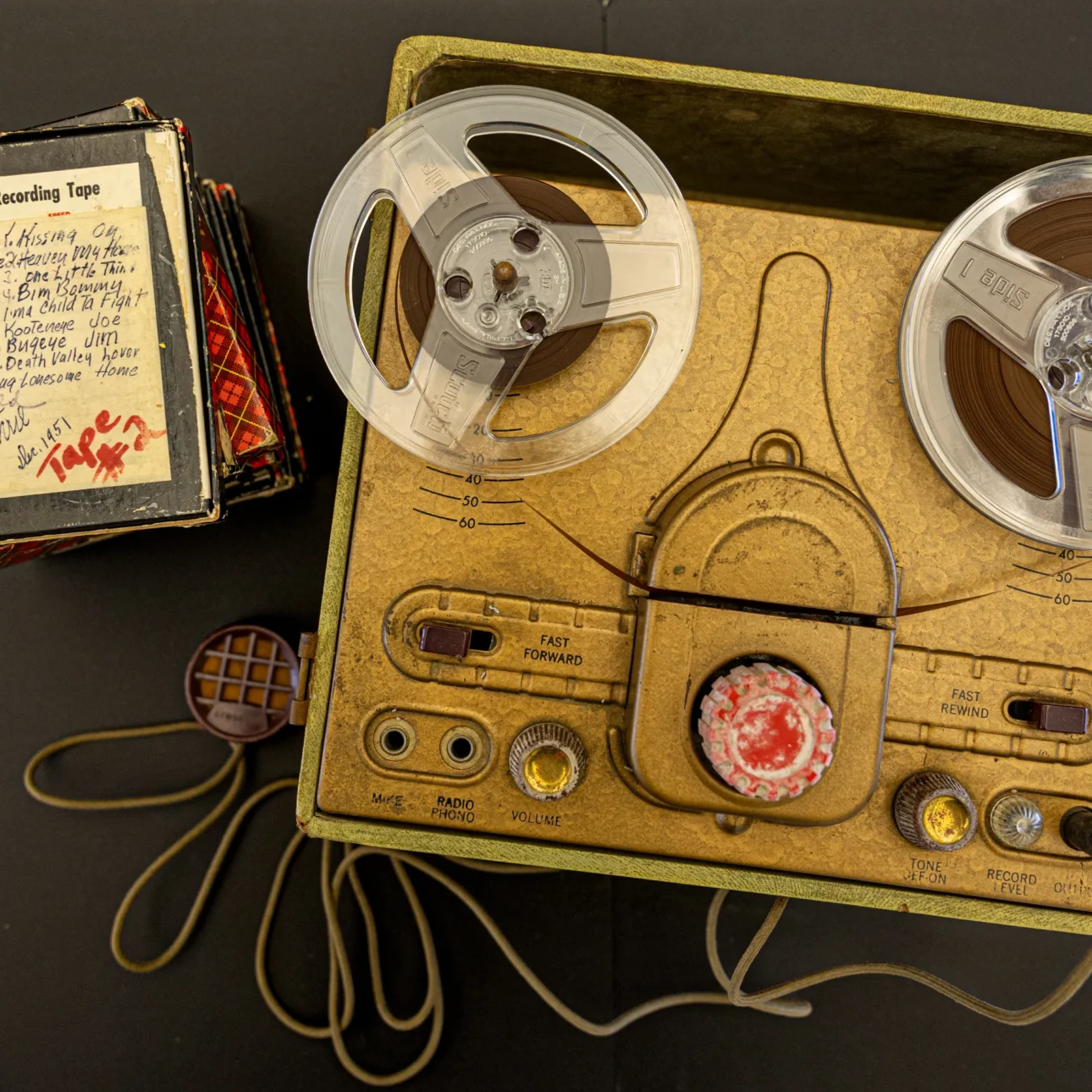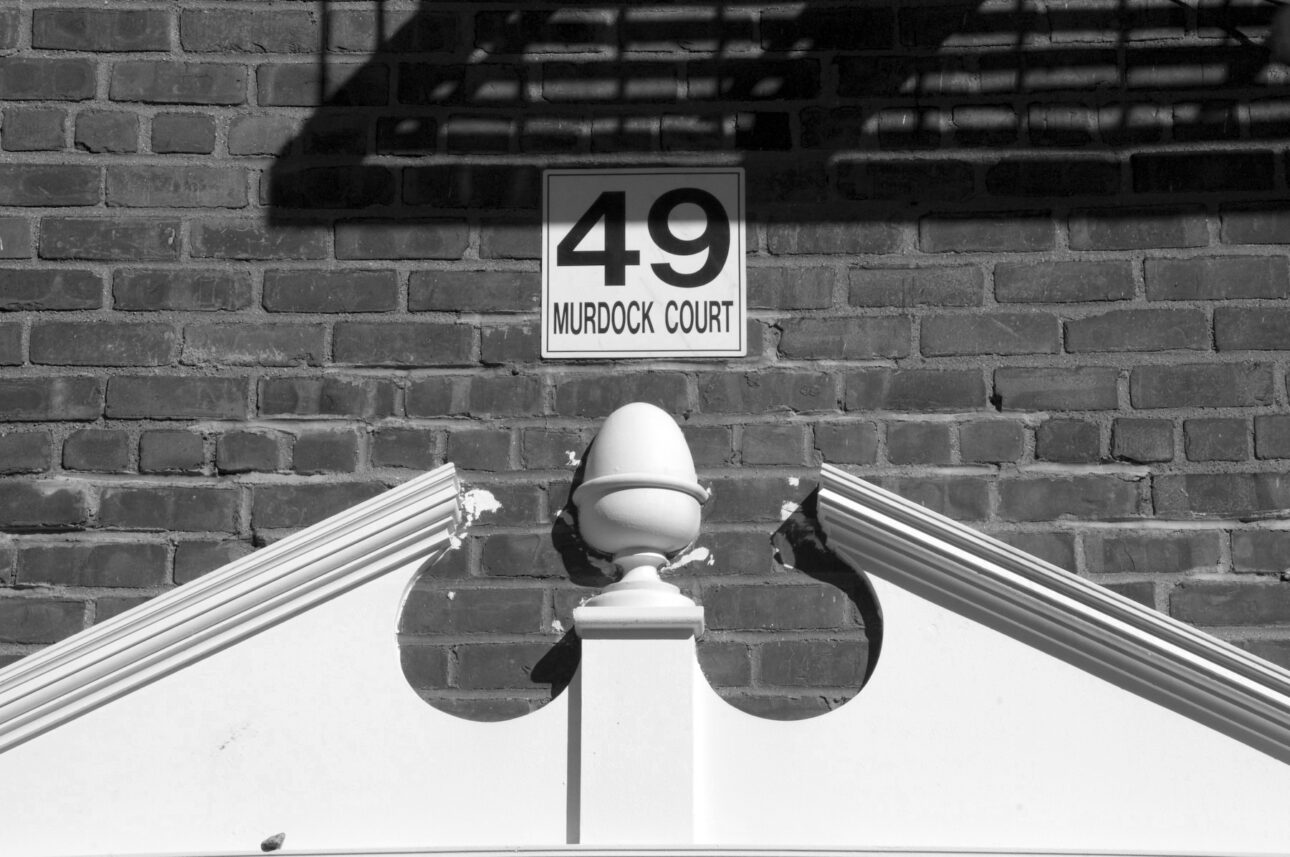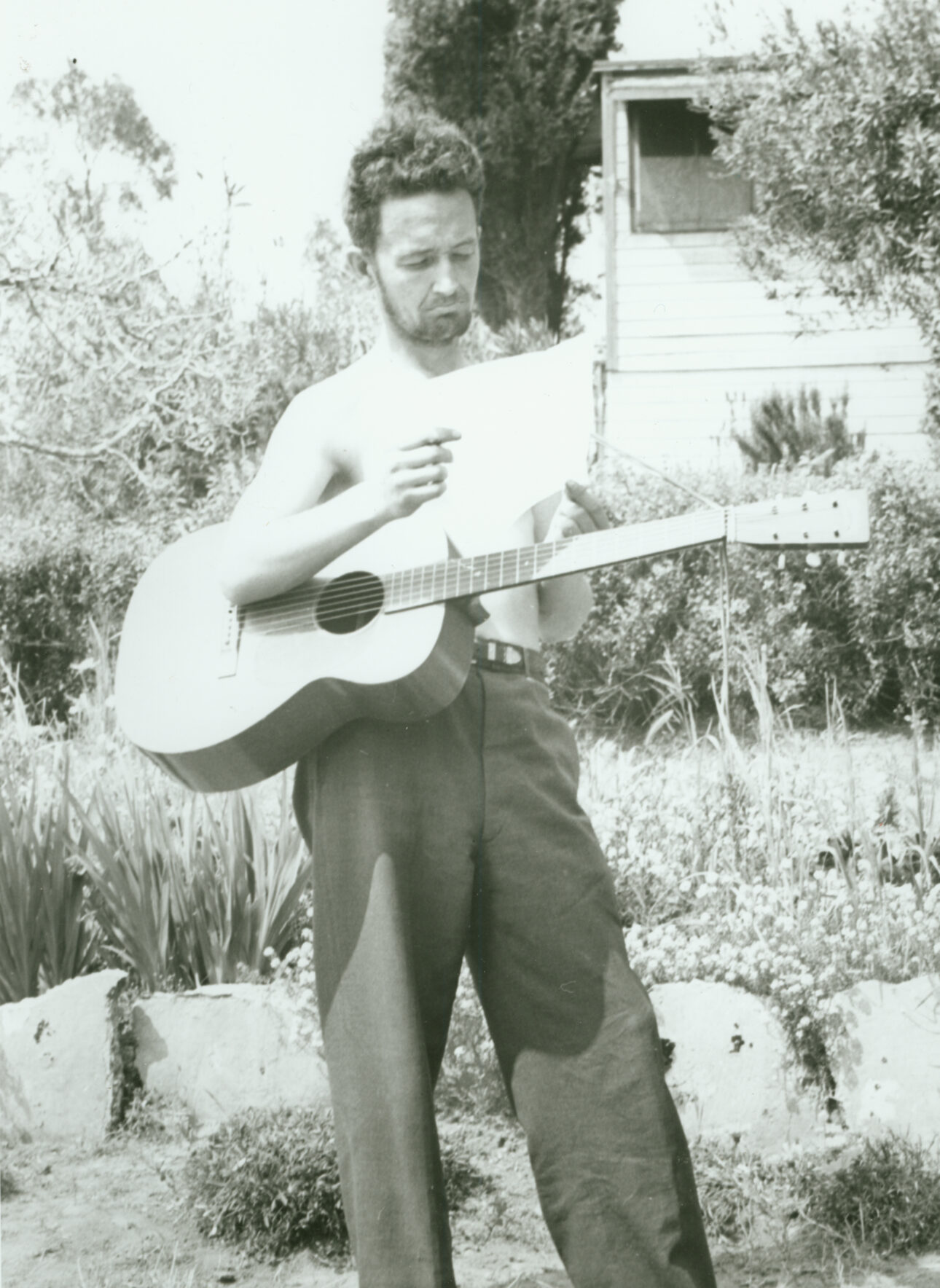“I felt like there was something that needed to be said in this moment,” says Anna Canoni. The person to say it, however, turned out to be her grandfather, Woody Guthrie, who died in 1967. The new album Woody at Home – Vol. 1 + 2 features over an hour of the legendary folk singer as he’s seldom been heard by the public before, documenting his songs in his family’s Brooklyn apartment in 1951 and 1952.
“Deportee,” a protest song Guthrie wrote about a 1948 plane crash that took the lives of 28 migrant farm workers, and the racism revealed in the media coverage of the tragedy, is one song with particular resonance in 2025. “Deportee” has been recorded by countless artists, including the Byrds, Joni Mitchell, and the Kingston Trio, but Woody at Home offers the first commercial release of the lyrics being performed by their author, with a different melody than it’s usually heard in.

“It’s like a talking blues version of ‘Deportee,’” says Canoni, who has worked for Woody Guthrie Publications, Inc. for over 20 years and became president of the organization last year, taking over from her mother Nora Guthrie. “But to hear him singing it, and getting the public to look at those words again and the meaning of what they’re about, it’s really an amazing thing.”
The political climate is not the only reason these recordings, which have been in the possession of the Guthrie family and his publisher, The Richmond Organization, Inc. (TRO) for decades, are being released now. Woody at Home producers Steve Rosenthal and Jessica Thompson were able to make the recordings cleaner and more listenable due to new advances in audio technology.
“I’ve been working for the Guthrie family for almost 25 years now, this is the sixth project that I’ve done with them,” says Rosenthal, who won Grammys for his work on the Klezmatics’ 2006 album Wonder Wheel – Lyrics by Woody Guthrie and the 2007 release of a Guthrie concert recording, The Live Wire: Woody Guthrie in Performance 1949. “We’ve talked about the Woody at Home tapes, every couple of years we would have another phone call about it, and I would have to tell Anna and Nora, ‘Y’know, I can’t really do it yet.’ And about a year and a half ago, we got a really big change in audio restoration software.”

Music Source Separation (MSS) has been making headlines in the music industry ever since filmmaker Peter Jackson was able to use machine learning to pull apart the different components of an audio recording for his 2021 documentary The Beatles: Get Back, and subsequently 2023 release of the ‘new’ Beatles song “Now and Then.”
There was a time when audio engineers had very limited options for editing a recording that captured multiple musicians, or a voice and an instrument, with a single microphone. But with these new innovations, different sounds can be much more easily enhanced, or muted, in the case of the loud electronic hum that once made Guthrie’s home recordings a much more difficult listen. “The thing about the Beatles software is that it’s proprietary and they’re not really sharing it with people, which is kind of a drag,” say Rosenthal. “But there is publicly available source separation software now that really does the trick and really works great.”
Bruce Springsteen’s 1982 classic Nebraska is often regarded as a groundbreaking early instance of a popular musician’s home demos being released as an album. Woody at Home – Vol. 1 + 2 is remarkable in part because it was recorded an entire three decades before Nebraska, and functions much in the same way as a document of a major songwriter’s day-to-day creative process. TRO’s Howie Richmond provided Guthrie with the tape machine, a rare luxury for even a very famous musician in 1951. “Howie bought Woody the tape machine because Woody was going up to the office but he thought it was too noisy, there was too many distractions, and he felt most comfortable at home,” says Rosenthal.

In the space of less than two years, Guthrie recorded over a hundred songs, as well as revisions of older compositions including his most famous work “This Land is Your Land,” which was first published in 1945. Woody at Home includes that, as well moments of Guthrie speaking directly to Richmond on tape, at one point articulating the mutability of his songs. “I have never yet put a song on tape or record or wrote it down or printed it down or typed it up or anything else that I really thought was a through and finished and done song and it couldn’t be improved on, couldn’t be changed around, couldn’t be made better,” Guthrie says in his immediately recognizable Oklahoma twang on a track titled “Howie, I’d Like To Talk To Yuh.”
Canoni was heavily involved in curating Woody at Home – Vol. 1 + 2 and narrowing the massive archive down to the 22 tracks that Thompson mixed and mastered for release. Canoni also assembled the running order with great care, ending the collection with the motivational message of the song “You Better Git Ready.”
“The way Woody would often write a ballad is he would tell a story, and then that last verse or the last two lines were the punch, the action, that was the way forward,” Canoni says. “And so I kind of also sequenced the album that way. We have all these stories of specific moments, but that last song, that last moment before you stop listening is ‘You better git ready, because you may be called to fight.’”

Leave a comment